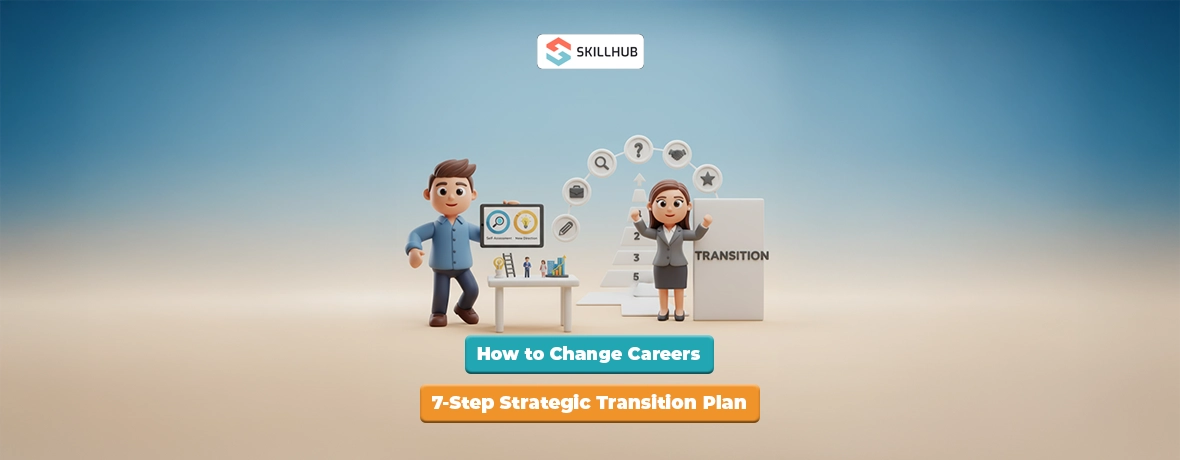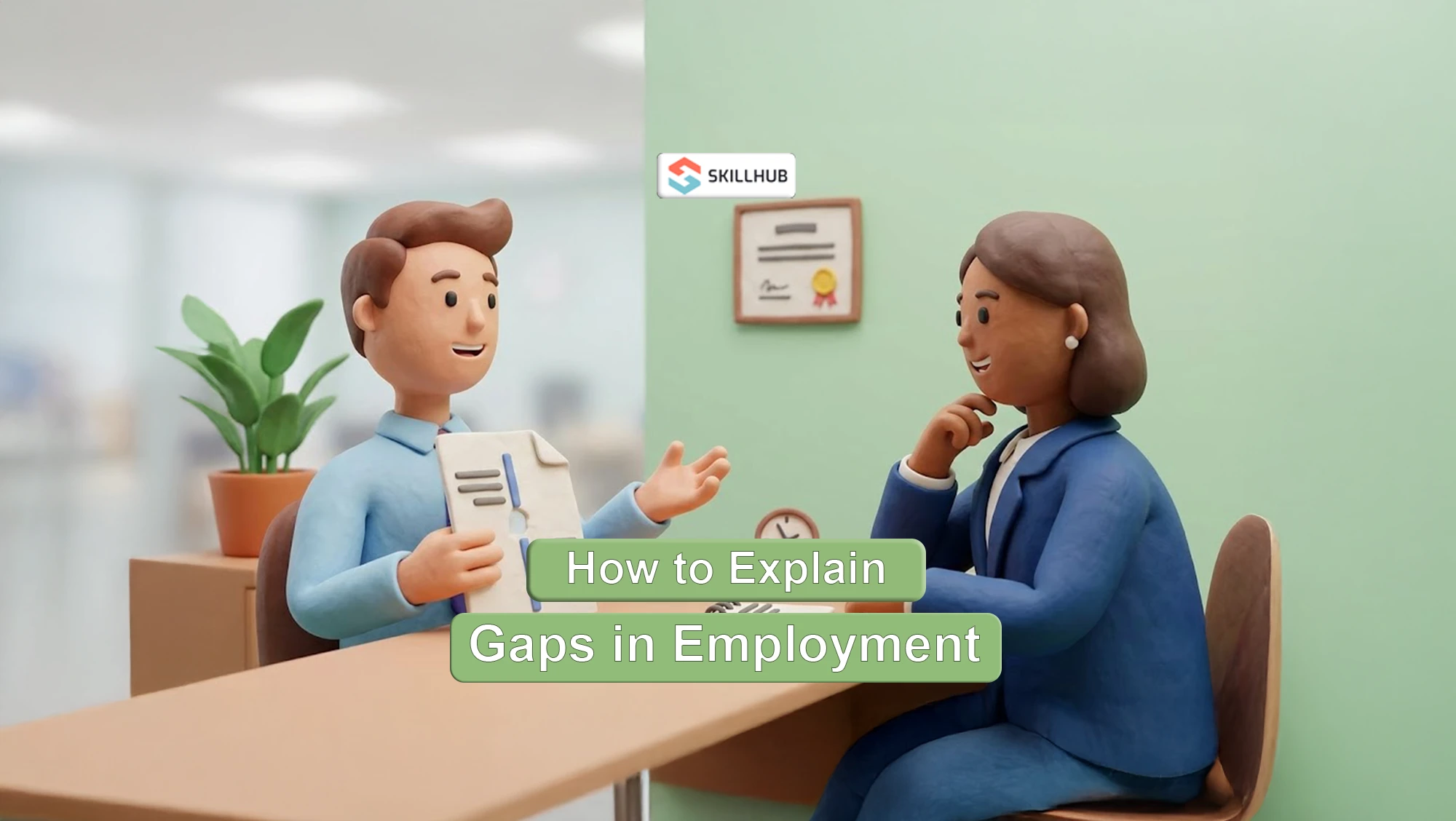How to Change Careers: A 7-Step Strategic Plan for a Successful Transition

The decision to change careers is one of the most significant, high-stakes undertakings in a professional's life. It is a fundamental pivot, driven by a search for greater meaning, better compensation, or a more sustainable work-life balance. Yet, the vast majority of individuals who attempt this transition do so without a coherent strategy, treating it as a desperate leap of faith rather than a meticulously planned project. This approach almost always leads to failure, frustration, and a panicked retreat to the familiar dissatisfaction of their old role. A successful career change is not an accident; it is an engineered outcome.
This guide rejects wishful thinking. It provides a rigorous, seven-step strategic framework designed to de-risk the process and maximize your chances of a successful, permanent transition. This is not a list of inspirational tips; it is an operational plan. We will treat your career change with the seriousness of a corporate restructuring, focusing on data-driven self-assessment, market analysis, and strategic personal rebranding. The goal is not just to find a new job, but to launch a new, more fulfilling professional trajectory.
Step 1: The Brutally Honest Self-Audit
Before you browse a single job board, you must conduct a deep, often uncomfortable, self-audit. Changing careers because you dislike your current boss is a tactical error; you are merely treating a symptom. You must diagnose the core disease. The goal of this phase is to separate situational dissatisfaction from fundamental misalignment.
Ask yourself these critical questions, and write down the answers:
- The Push Factors: What, specifically, is driving you away from your current career? Be precise. Is it the work itself (the tasks), the industry (the culture), the compensation model, the lack of autonomy, or the limited growth potential?
- The Pull Factors: What are you moving towards? What specific values, interests, and skills do you want to be central to your new career? Abstract goals like "I want to be happy" are useless here. You need concrete attributes: "I want a role that is 80% analytical and 20% client-facing," or "I want a career with a clear path to executive leadership."
- The Non-Negotiables: What are your absolute financial, geographical, and lifestyle constraints? What is the minimum salary you can accept? Can you relocate? Can you afford a temporary pay cut for a long-term gain?
This deep self-reflection is similar to using career tests and quizzes, but with a much higher degree of personal accountability.
The most common failure point in a career change is a misdiagnosis of the problem. A candidate leaves a high-stress sales job for what they believe will be a calm marketing role, only to find the deadlines and pressure are identical. They didn't hate sales; they hated a high-pressure environment. Without a correct diagnosis, you are simply rearranging the deck chairs on the Titanic.
Step 2: The Skills and Market Viability Analysis
Once you have a hypothesis about a new career path, you must test its viability against the realities of the market. This is where passion meets practicality.
This audit will form the basis of your professional development plan. You must have a concrete strategy for closing every single gap identified in the third column, whether through online courses, certifications, or freelance projects. If your pivot points toward commercial real estate, pair your market research with a formal credential. Completing a Commercial Real Estate Certificate through targeted real estate classes in NYC can close core knowledge gaps (valuation, leasing, finance) and signal credibility to hiring managers while you build deal-oriented proof-of-work.
Step 3: The Informational Interview Campaign
Do not apply for jobs yet. Your next step is to gather real-world intelligence. You must conduct a minimum of 10-15 informational interviews with professionals who are currently in the role or industry you are targeting. This is not about asking for a job; it is about collecting data.
Key Questions to Ask:
- "What does a typical day or week in your role actually look like?"
- "What is the most challenging aspect of this career that isn't mentioned in the job descriptions?"
- "What are the most critical technical skills a newcomer must have to be credible in this field?"
- "What is the realistic salary range for someone entering this field with my transferable experience?"
This campaign provides an unvarnished, real-world view of your target career, allowing you to validate or invalidate your hypothesis before you invest significant time and money in the transition.
Step 4: The Rebranding Phase
At this stage, you must begin to strategically reposition your professional brand. This is where your career change becomes real to the outside world.
- The Transition Resume: Your old resume is now obsolete. You must create a new "transition resume" that de-emphasizes your past job titles and aggressively highlights your transferable skills and newly acquired knowledge. This document must be built from the ground up to speak the language of your new industry.
- LinkedIn Overhaul: Your LinkedIn profile must be completely rewritten to reflect your new career goal. Change your headline, rewrite your summary to state your new objective, and join industry-specific groups. This is a crucial step in managing your personal brand.
The Expertise Barrier: The Immense Challenge of the Transition Resume
This is the single greatest technical hurdle in a career change. A standard resume is designed to show a logical, linear progression. A transition resume must do the opposite: it must create a compelling, logical narrative out of a seemingly illogical leap. You must frame your past experience not as "what I used to do," but as "the unique foundation that makes me a powerful and unconventional candidate for this new role."
This requires a masterful understanding of resume architecture, keyword optimization for a new field, and the psychology of hiring managers. Most career changers fail at this step, submitting a document that looks confused and unfocused, leading to immediate rejection.
Are you confident that you can transform your decade of experience in one field into a compelling, logical, and irresistible argument for your potential in a completely new one? This is not just writing; it is career-level strategic communication. For a pivot this critical, leveraging professional resume writing services is not a luxury; it is a strategic necessity.
Step 5: Gaining "Proof of Work"
You cannot enter a new field with theory alone. You need tangible proof of your new skills. This means finding a "bridge project" a freelance gig, a volunteer opportunity, or a personal project that allows you to apply your new knowledge and generate a quantifiable result.
- Example for an aspiring UX Designer: Volunteer to redesign the website for a local non-profit.
- Example for an aspiring Content Marketer: Start your own professional blog on a niche topic and use SEO to grow its audience.
This project becomes a cornerstone of your new resume and the primary topic of conversation in your interviews. It is your proof of commitment.
Step 6: Targeted Networking and Job Application
Only now, with a clear strategy, a rebranded resume, and proof of work, do you begin to apply for jobs.
- Network First, Apply Second: Leverage the contacts you made during your informational interview campaign. Let them know you are now actively on the market. A warm introduction is exponentially more effective than a cold application.
- Quality over Quantity: Do not blast out hundreds of applications. Target 10-20 companies that are a perfect fit for your new brand. Customize your resume and cover letter for each one.
Step 7: The Interview Phase
In the interview, you must be prepared to answer the most important question: "Why the change?"
Your answer must be a confident, positive, and forward-looking narrative. Do not badmouth your old career. Instead, frame your transition as a deliberate and strategic move towards a field that better aligns with your core strengths and long-term ambitions. Your rehearsed STAR-method stories should all be framed through the lens of your new career goals.
Conclusion: A Project, Not a Panic
Changing careers is a project to be managed, not a crisis to be survived. By following a structured, strategic process, you replace fear and uncertainty with data, preparation, and confidence. You move from a position of weakness, fleeing a job you dislike, to a position of power, actively choosing a future you have designed.
Ready to take the first, most critical step in your career transition by crafting a powerful new resume? Consult with a Skillhub Career Expert today.
%20(1).png)



%20(1).webp)